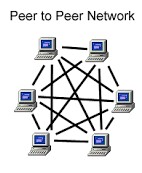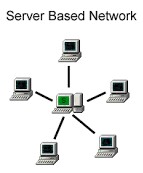| HOME | NETWORK ARCHITECTURE | NETWORK TOPOLOGY | CLASSIFICATION OF NETWORK |INTERNET | INTERNET SERVICES |
Network Architecture: The way network are designed to communicate.
|
|
|
|
|
|
Is a simple, inexpensive network
that typically connects fewer than 10 computers. All computers in the network have
equal capabilities to use the resources (hardware, software, data and files)
available on the network. With peer-to-peer network, there is
no server. |
Server: – Provide services to client. – Controls access to resources on
the network. – Provides a centralized storage
for program. Note: Server can be
a mainframe computer used in a network environment. Client: – Requests services from a server
computer. Also called as a workstation. |
|
|
Easy to setup. – An operating
system (OS) such as Windows XP already in place may only need to be
reconfigured for peer-to-peer operations. |
Scalability. – Any or all elements can be replaced
individually as needs increase. Flexibility. – New technology can be easily
integrated into system. Interoperability. – All the components
(client/network/server) work together. Accessibility. – Server can be accessed remotely and
across multiple platforms. |
|
|
Less
security. – Does not provide the
security available on a client-server network. Lack of security controls. |
Maintenance. – Large networks will require a staff
to ensure efficient operation. Dependence. – When server goes down, operation will
cease across the network. |
|
|
|
|
|
|
|
|
|
|
|
|
|
Cost |
Initial costs lower. |
|

